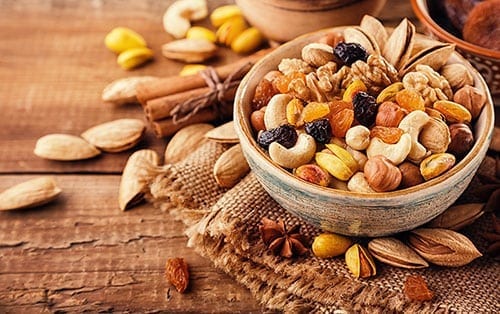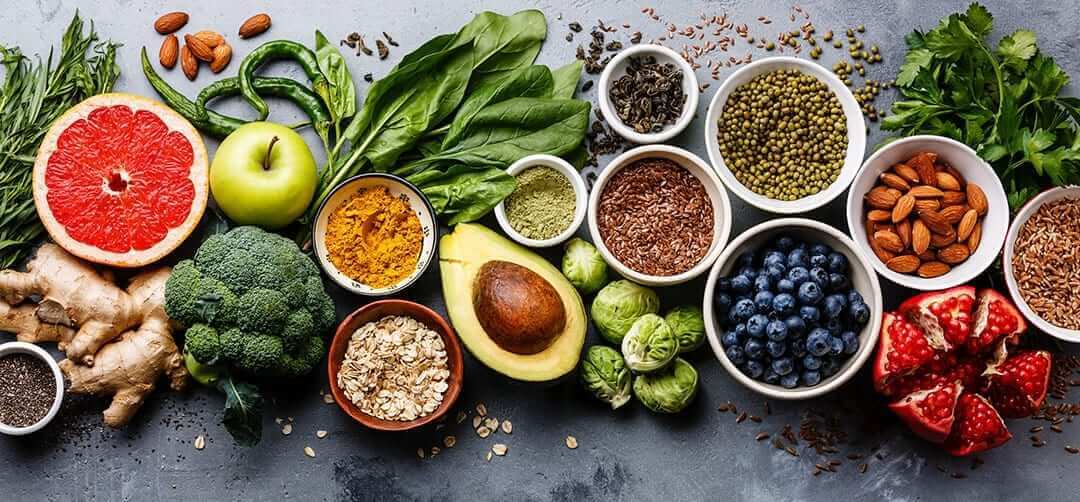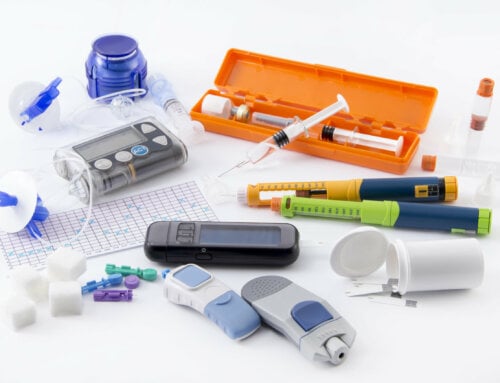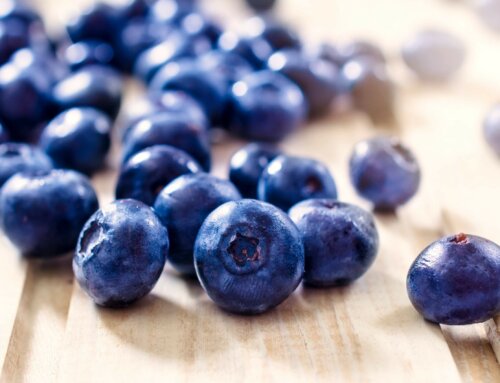New research shows that diabetes can be predicted up to 20 years before it develops. If you do not already have diabetes, you may take steps to prevent it and if you already have diabetes, you can use these summer food tips to help you better control blood sugars as well as improve your overall health. Working on a healthier diet and weight loss plan seems to be a goal for most people, especially when they already have diabetes. “Nutritional advice after awhile can sound like background noise,” so keeping it simple is beneficial. Eating habits play a part in the development of chronic diseases such as heart attack, stroke and type 2 diabetes.
Start by knowing your fasting blood sugar if you do not have diabetes. 60-99 mg/dl is the accepted range. Know your A1C if you do have diabetes which should be between 6.5-7.5% depending on your age, history of heart disease and other medical issues. A1c levels should be an individual decision between you and your provider.
Instill new eating habits and better choices over time, starting this summer, and make it more than a passing fad. Don’t just say, “I will eat more healthy.” Baby steps this summer with real changes can be the start of a new you. Consider writing out a menu plan for the week or at least the day with basic, simple and clean ingredients. Follow along for some reasonable nutritional advice.
Added Sugars
We already know sugar can be bad for just about every organ in our body whether you have diabetes or not. Eating added sugars, “significantly increases your risk of dying from cardiovascular disease.” The average American continues to eat 22 teaspoons of added sugar, daily. Every cell lives on glucose and eventually the body converts food to glucose for fuel. There is no way to avoid all sugar, nor do you need to, however skipping and avoiding foods with added sugars is possible. Sugar, sweetened beverages, whether sweetened ice tea, flavored sports drinks, regular soda or fruit juice, are a, “known cause of NASH (non-alcoholic steatohepatitis disease). Many people with type 2 diabetes suffer from NAFLD (non-alcoholic fatty liver disease) and if left alone can lead to cirrhosis and liver cancer.
Although eating sugar does not cause diabetes, it does add empty calories which causes weight gain and increases the risk of developing type 2 diabetes. It is best to avoid added sugar and stick to natural sugar, such as what is found in fruit, in moderation. Even eating too much fruit (natural sugar) is not recommended for people with diabetes. Look for sweeteners on labels and avoid the natural sounding ones when you can. Watch out for molasses, honey, brown sugar, granulated sugar, maple syrup, pancake syrup, fruit nectars, malt syrup, powdered sugar, raw sugar, beet sugar, rice syrup, corn syrup, high, fructose corn syrup, cane juice and anything that ends in “ose.”
Dessert is Still on the Menu
With summer here, fruit can become your simple, chosen dessert, when consumed in proper portion size. Although fruit is plentiful in vitamins, minerals and fiber, too much natural sugar in fruit can become the enemy when you have diabetes. The summer selection is abundant and delicious, but numbers can quickly rise. A better step is to not eat fruit alone. The combination of eating fruit with a protein will help prevent blood sugar and insulin level spikes. Eat sliced strawberries with a small scoop of ricotta cheese, a peach with a handful of unsalted almonds, pineapple with 1/2 cup of cottage cheese or a hard-boiled egg with a kiwi. Focus on seasonal fresh fruit over dried fruit because dried fruit is concentrated and contains more sugar per serving. Choose fruits with lots of water such as watermelon to quench thirst, prevent dehydration and make you full more quickly.
Thoughts on Summer BBQs

Take hummus to the next level this summer and don’t think of it as just a dip. Hummus is made from ground chick peas (carbohydrates), tahini, olive oil, lemon and a dash of salt. It has a lot of vitamins, minerals, protein, fiber and contains healthy fat. You can purchase it already made or whip up a batch in the blender. Besides using as a vegetable or pita bread dip, it can create a creamy salad dressing when added to olive oil and red wine vinegar. Fresh garlic cloves, chopped olives or basil leaves can be mixed into hummus for more flavor and antioxidants. Hummus can be used as a sandwich spread instead of nut butters or combined with light mayonnaise to give flavor and texture to a tuna or chicken salad sandwich. It can be used to baste lamb cubes or chicken thighs when added to a citrus juice or as a topping for roasted vegetables.
If you don’t want to light the grill or heat the kitchen, make a simple chicken salad from cooked chicken, mashed avocado (substitute for mayonnaise), lime juice, crushed red pepper, frozen peas, scallions and parmesan cheese. Serve quinoa as a side dish. This meal has protein, carbohydrates, healthy fats and takes only a few minutes to prepare.
Watch out for summer drinks, club soda does contain sodium, but seltzer does not. Most people do not realize that tonic water is full of sugar. Check flavored sparkling waters which may have added caffeine, sodium or artificial flavors. Make your own lemonade by squeezing lemons (contain pectin) and add Stevia and ice. Lemons have soluble fiber and may increase alertness. Make your own ice tea and add flavor with orange slices and fresh mint.
Cool New Freezer Section Products
Veggie spirals and frozen herbs. Veggie spirals have been around for a while, but most people do not want to invest or use a “spiralizer” to make them. Fresh ones are available in specialty markets but go bad quickly. New to the market are Green Giant frozen veggie Spirals in zucchini, beet, carrot and butternut squash. They can be placed under vegetables, meat, tomato sauce or just olive oil just like noodles. “Simply Beyond,” is organic, fresh to frozen herbs. They are already washed, bright in color, chopped, stemmed and ready to use. These herbs last longer than fresh and have a richer taste than dried spices and should be added to soups, stews, grilled meats and roasted vegetables.
And Chocolate?
The newest study out from Loma Linda University in California was small but positive and states, “dark chocolate has multiple benefits including: lowers stress levels, improves mood, heightens memory, decreases inflammation, boosts immunity and helps prevent white blood cells from sticking to arterial walls.” Harvard Public Health school studied over 55,000 people and found that, “dark chocolate lowered rates of atrial fibrillation, a common heart arrythmia which can increase the risk of a stroke.” The dark chocolate should be at least 70% cocoa. Some chocolates contain up to 99% cocoa. Look for organic, fair trade made chocolate, if possible. Eat one square as a treat, which contains about 70 calories.
Benefit of Eating Flax Seeds
Flax seeds are an excellent source of Omega 3‘s especially if you do not eat fish. 2 tablespoons of flax seeds contain 4 grams of protein, 6 grams of fiber and about 100 nutrient dense calories. They should be purchased whole (can’t digest whole) and ground immediately before eating for best nutritional content. You can use a coffee bean grinder or a simple mortar and pestle. “The healthy compounds in flax seeds begin to oxidize within 24 hours of grinding.” Flax seeds which have been eaten for years, improve digestion, balance hormones and may decrease appetite. They can be added to cereals, plain Greek yogurt, home baked muffins, salads and homemade smoothies.
What About Nuts?

These are just a few suggestions to get you on track for healthier eating this summer season. Baby steps for those of you who really hate change and bigger steps for those who are ready to make a change. Keep it simple and delicious!
Have a question or comment? Then post below, no registration required. I would love to hear from you!
NOTE: Consult your Doctor first to make sure my recommendations fit your special health needs.







Leave A Comment